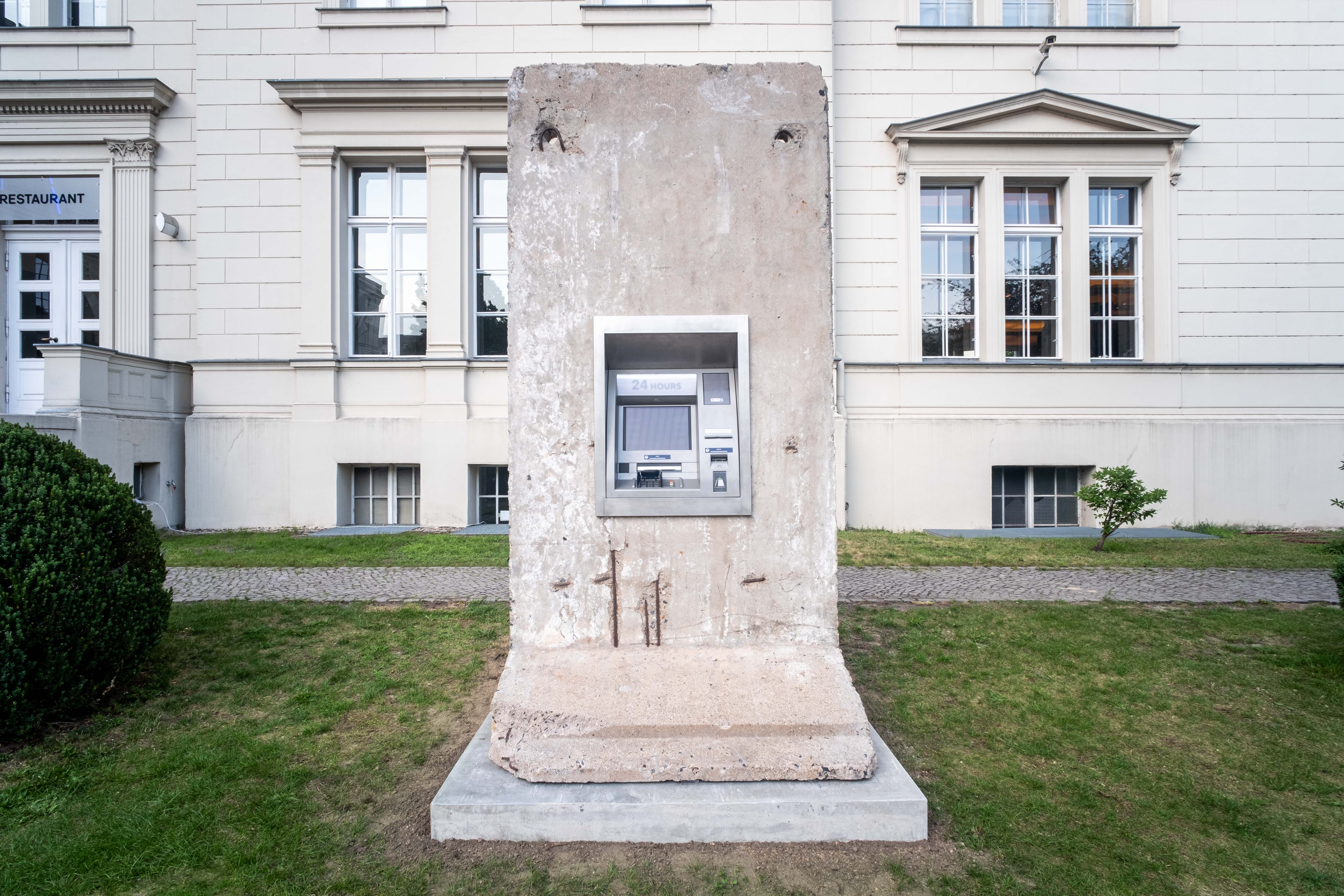The Statue of Liberty in front of Manhattan is considered a symbol of boundless freedom. The monumental sculpture once greeted the immigrants arriving on ships in the New World and quickly became a landmark of New York. The installation by the artist duo Elmgreen & Dragset refers to its status as a popular tourist attraction. Their “Statue of Liberty” (2018), however, consists of a concrete segment of the Berlin Wall and an ATM machine, now removed from its function. As a gift from the collector Heiner Wemhöner, the sculpture “Statue of Liberty” by the Danish-Norwegian artist duo will welcome visitors to Hamburger Bahnhof from June 21, 2019.
At first, the sculpture creates an absurdly pointed picture: In an opening of the “Iron Curtain” that once separated East and West Berlin, a device for collecting cash was inserted. The paradoxical fusion of two objects representing two systems – capitalist West and communist East – raises questions about the current state of the city of Berlin and its development since the fall of the Wall.

